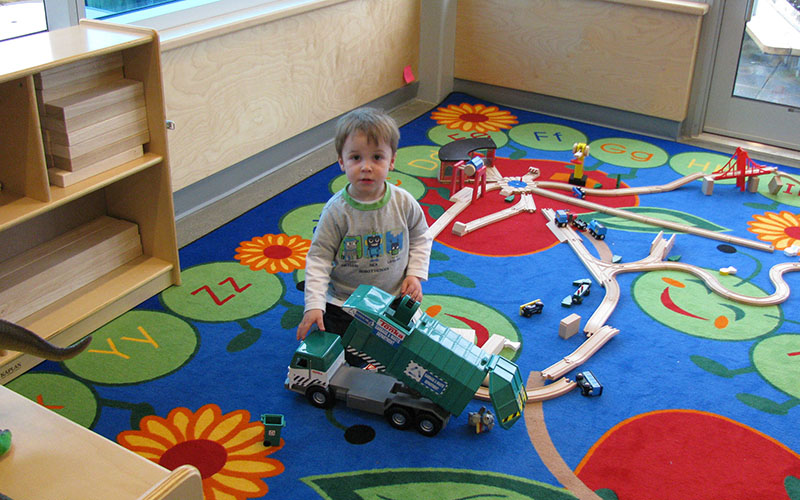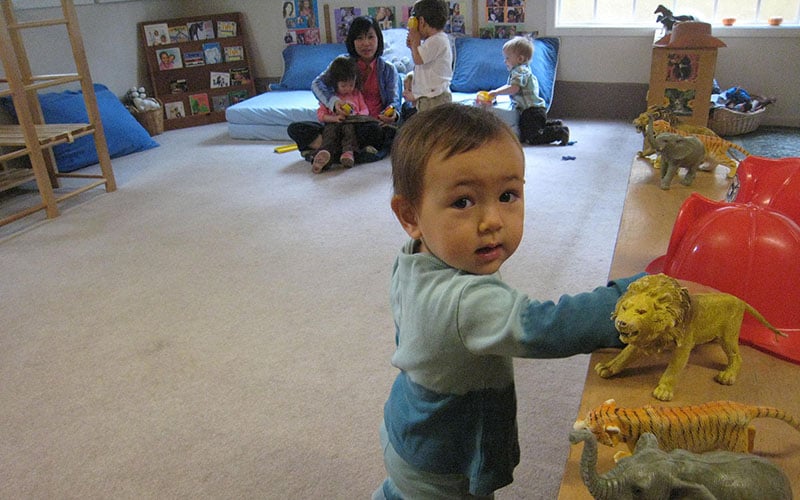WASHINGTON – Infant child care in Arizona costs an average of $9,437 a year, rivaling in-state college tuition and putting care out of reach for many families, according to a recent Economic Policy Institute report.
And Arizona’s costs were on the low end when compared to the rest of the nation, with infant care costs in Washington, D.C., reaching $22,631 annually.
The numbers were unsurprising to early child care advocates.
“It is hard everywhere, because we don’t make the commitment to child care that we really need to,” said Helen Blank, director of Child Care and Early Learning at the National Women’s Law Center.
Arizona is in the minority of states where infant care costs slightly less than in-state tuition, with average child care costs about 4.7 percent less than college costs, said Josh Bivens, director of research and policy at EPI.
Even though Arizona is relatively cheap, child care costs are still a “big chunk” of a family’s budget. The Department of Health and Human Services says child care should only take up 10 percent of a family’s income, but the EPI report says it takes up 17.6 percent of a typical family income in Arizona.
By HHS’ standards, only 27.9 percent of Arizona families can afford infant care.
“Supply of really high-quality care is pretty limited because not that many families can afford it,” Bivens said. “Even for families willing to skimp on other parts of their budget.”
Kelley Murphy, director of early childhood policy with the Children’s Action Alliance of Arizona, said the report is “pretty dire” but unsurprising. Beyond cost, she said it’s also hard for families to find and access quality care.
Murphy said families will often prioritize child care to the detriment of other budget areas, like food and housing. She said families will often put kids in cheaper, sub-quality care at an unregulated facility or leave them at home or with a friend or relative who is not equipped.
Erin Raden, executive director of the Arizona Child Care Association, said child care from birth to age 5 is important for the development of children, and for closing the achievement gap between poor and wealthy kids.
“Part of the problem is that it is difficult to get child care subsidies from the state,” Raden said. “And there’s a waiting list for folks needing assistance.”
The Child Care and Development Fund makes federal funds available to states to subsidize health care costs for qualifying low-income families. In Arizona, that subsidy is distributed through the Child Care Assistance program by the state’s Department of Economic Security, where a spokeswoman said 6,396 children were on the priority waiting list as of late April.
Families referred through Temporary Assistance for Needy Families or the Department of Child Safety do not need to go through the wait list, according to DES.
Arizona’s Child Care Assistance program pays child care providers in the state 75 percent of the 2000 market costs of care. A 2015 report by the National Women’s Law Center said the only other state operating on the 16-year-old market rates was Kansas, while the rest of the country is using more recent market rates, according to the study.
“Arizona never stood out as a star in terms of its child care assistance program,” Blank said, adding that the state is not known to be “generous” and often has crises with its subsidy program.
Raden said some providers ask families to pay the difference, but many families can’t afford to do so. She also said providers sometimes opt to not charge some families what’s not covered by the subsidy, which hurts their own business, or choose to not serve those families.
The EPI report called for greater public investment in early child care to support home visits by trained nurses before and after childbirth, increase access to high-quality childcare, and to ensure professionalization of early childhood caregivers and teachers.

